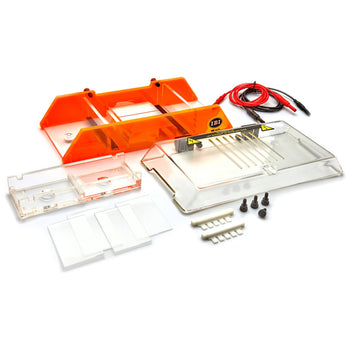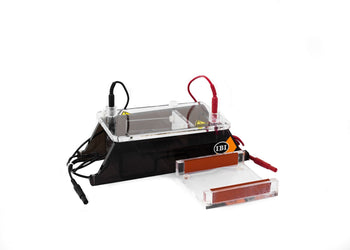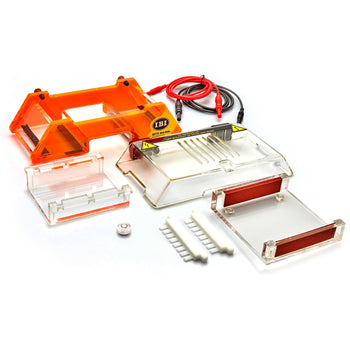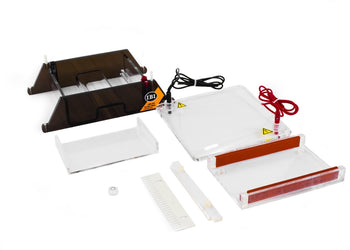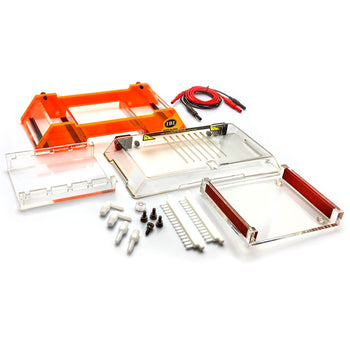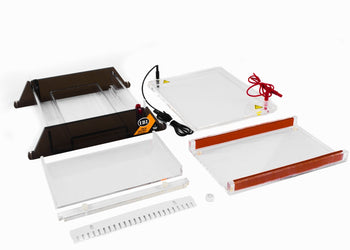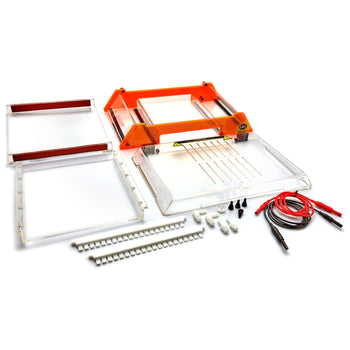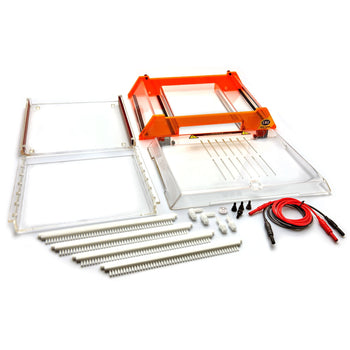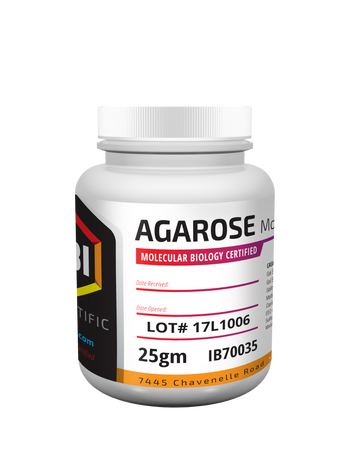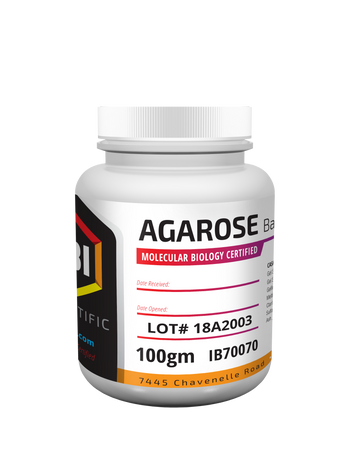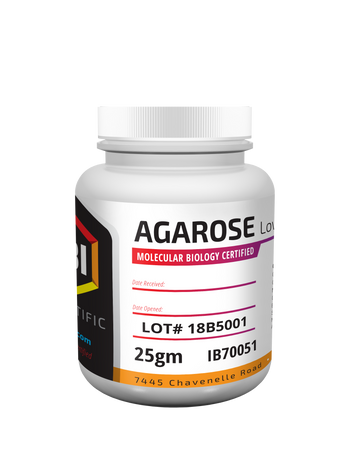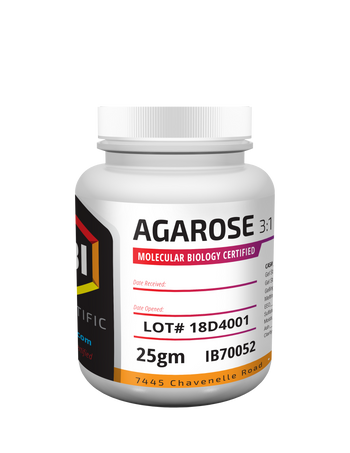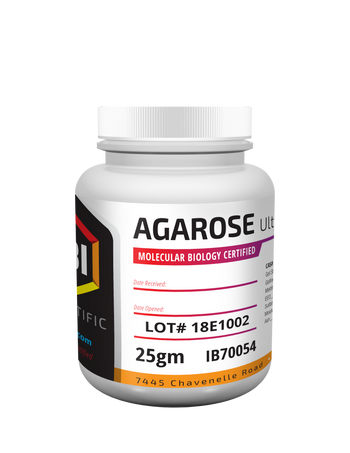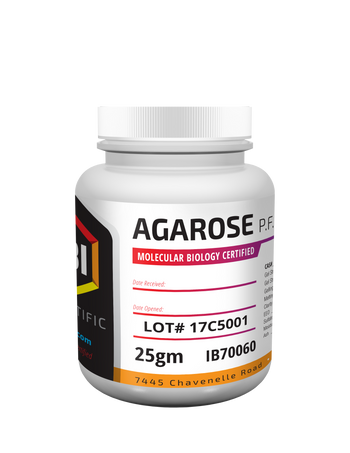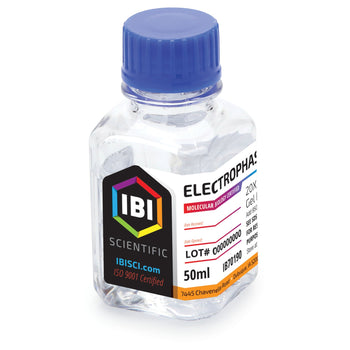Electrophoresis & Blotting

Electrophoresis is a core molecular biology laboratory technique. That makes it essential to have the best quality equipment and reagents to make every procedure succeed. IBI Scientific carries a full line of electrophoresis products to meet your lab’s needs.
Purpose of Electrophoresis
Molecules like DNA, RNA, and proteins differ in their sizes and electrical charge. Gel electrophoresis works by passing an electrical charge through a gel matrix, which allows molecules to pass within it. Positively charged molecules are attracted to the negative end of the charge, and vice versa. The gel sits in an ionic buffer solution, allowing the electrical field to be established.
This technique allows the different molecules to become spread out along the length of a gel matrix based on their size and charge. Using a dye or radioactive label allows you to visualize the different molecules, which show up as bands on the gel. The goal is to get the molecules to separate but not to travel so far that they run off the end of the gel.
Types of Electrophoresis Systems
There are two major types of electrophoresis systems: horizontal and vertical.
In a horizontal electrophoresis system, the gel sits in a horizontal orientation. This type of system usually uses agarose gels, which have a larger and less uniform pore size. Because DNA and RNA are relatively large molecules, they are typically run on agarose gels.
In contrast, vertical electrophoresis systems allow the gel to sit vertically. These gels are typically made of an acrylamide matrix. Acrylamide gel pores are 10 to 200 nanometers in diameter, small enough for proteins to separate with high resolution. Because exposure to oxygen inhibits the polymerization of acrylamide, acrylamide gels are best suited to a vertical system that limits exposure to atmospheric oxygen. Western blot protocols typically use vertical electrophoresis.
How to Choose an Electrophoresis System
Choosing the right gel electrophoresis requires a careful look at technical specifications to ensure the equipment meets your lab needs. Consider the following factors:
- Type of system. As mentioned above, vertical versus horizontal systems meet different lab needs.
- Number and size of gels. Do you plan to run a lot of samples or a few? Different electrophoresis systems accommodate a different size of gels, from mini-gels to extra width sizes. Also check how many units can run simultaneously with a given power supply. Higher throughput operations may require more units and larger gels permitting more wells to run at once.
- Power supply. The strength of power supply determines the separation and resolution you will get when running electrophoresis protocols. From 300V to 3000V, the voltage depends on what type of molecules (DNA, RNA, protein) you plan to run.
- Quality of reagents. The success of a molecular biology experiment often hinges on the reagents chosen. IBI Scientific is proud to be an ISO 9001:2015 certified manufacturer of Life Science Research Products, including electrophoresis products and molecular biology reagents. This means we meet stringent quality control criteria, ensuring the accuracy of your molecular biology procedures.
- Membrane transfer options. For Western blot protocols, proteins are transferred from the gel to a special membrane. Check the compatibility of your system with membrane transfer supplies to ensure your Western blots work as intended.
- Efficiency. Higher power sources with a smaller distance between electrodes create a stronger electric field, maximizing transferability and separation in the minimum needed time. Look for the highest efficiency system available, particularly if your lab runs a lot of electrophoresis and Western blot protocols.
IBI Scientific offers the best gel electrophoresis systems in the industry. By delivering quality at an affordable price point, we have become leaders in the life sciences industry. Contact us today to speak with one of our equipment specialists, who can provide individualized recommendations for your laboratory’s needs.

